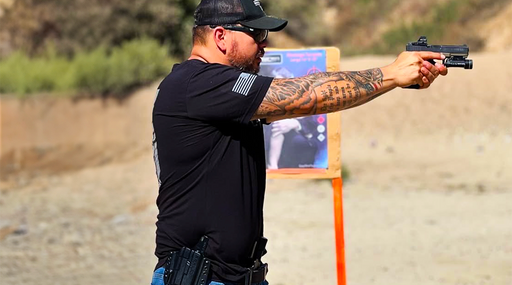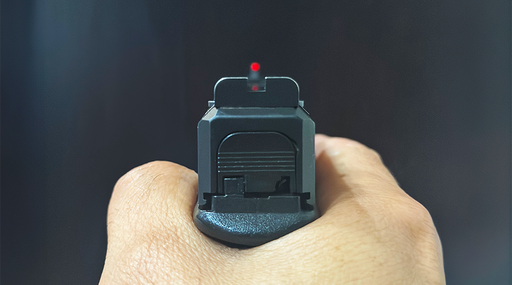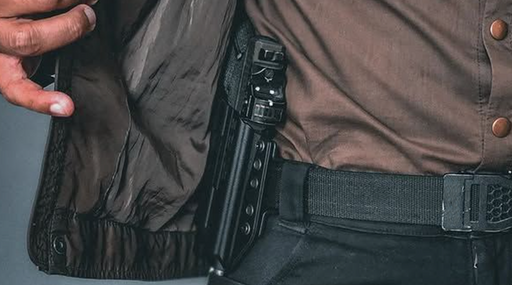A lazy person’s gun cleaning guide
There are some people who give their gun a good cleaning and lubrication after every shooting session. I am not among them. But I admit I get away with that because I started with a well-lubricated firearm in the first place, and I generally use boringly reliable striker-fired models. Here’s the most practical advice on gun cleaning I have, based on my observations as both a shooter and instructor.
Know your gun.
If you’re going to be lazy like me and not clean those guns after every range trip, it’s critical that you know the signs that your firearm is due for a cleaning. For those ultra-reliable striker guns, keeping a rough track of your round count and going no more than 300 between cleanings isn’t a bad system. If you’re shooting a handgun with tighter tolerances, i.e. most 1911s, the need to clean may occur sooner under some conditions. Regardless of the type, it’s been my observation that the earliest sign of a gummed-up semiauto is a slide not returning as fast as it normally does. Malfunctions may or may not immediately happen, but they’re imminent. If you fire your handgun enough, you’ll develop a feel for when the slide gets sluggish. Although this could be due to a mechanical problem, most often it’s just crud.
Salt is not for the inattentive.
Depending on your gun holster and carry location, your gun could be exposed to excess salt from sweat. The same is true for any gun that spends time around saltwater. No matter the source, salt plus moisture will cause rust in short order—just a day or two is all it takes for visible oxidation to appear. Rust can ruin the function of your gun, and needs to be removed promptly—no slack for the lazy here!
Your favorite solvent and a synthetic bristle brush are usually effective in removing small rust spots. Larger or deeper oxidation will require careful treatment with steel wool. Choose the finest grade you can buy. After removing rust, a light coat of oil, even on the sights if they’re the location, forms temporary protection against its return. Don’t neglect oiling the salt-exposed firearm.
Lazy person’s gun cleaning kit
Here’s what I use for three-minute cleaning jobs to keep my guns running right:
- -Rag made from an old t-shirt.
- -CLP: Cleaner, Lubricant, Protectant in one product. I prefer Frog Lube for its non-staining, nice-smelling, easy-to-apply consistency, and food-grade ingredients. There are tons of great products out there, and when I’m maintaining a bolt rifle, I prefer a dedicated solvent and separate gun oil.
- -RemOil aerosol spray, the Phillips Milk of Magnesia of guns. If there’s a part not moving that should, a generous shot of RemOil and gravity, not to mention the t-shirt rag, are often all it takes to get dirt or carbon build-up out of the way. Particularly with .22s Semiautos, It’s a godsend. I don’t use it often, but when it’s needed, it works fast. As the name implies, it also offers a rust-protective coating that I feel is a little better than Frog Lube in humid environments.
- -Something to keep it all in one place and sanitary. I have the first and second items in a plastic Ziplock in my range bag, which is with me on every range trip.
Here’s how I do that three-minute clean-up on a striker-fired pistol:
- -CLEAR THE GUN! Remove the magazine and check the chamber both visually and manually.
- -Disassemble the pistol. Striker fired pistols reward my lazy bone by only having four pieces to clean: frame, barrel, recoil spring assembly, and barrel. Easy peasy---and no little pins, springs, or bushings to fly off into the weeds.
- -With a rag dabbed with a few drops of Frog Lube, wipe off the recoil spring. There should be no residue of cleaning product left on the spring; this is close to a dry wipe.
- -With a Frog Lube-treated corner of the rag, wipe the slide down, inside and out. Here, pinching a wad of rag between thumb and forefinger makes the equivalent of a stiff brush that cleans the crud out from the grooves running the length of the inside.
- -Wipe the inside of the frame, clearing any visible carbon build-up.
- -Wipe the barrel exterior, locking lugs, and feed ramp—the latter will be soiled even after a few rounds. I’ve gone over 1,000 rounds without cleaning the inside of a barrel, but the feed ramp needs attention.
- -Lightly lubricate the outside of the barrel. One drop of Frog Lube, distributed with my finger around the barrel, does the trick. Same goes for each groove of the slide and the matching rails on the frame. Using the rag, I give a light coating of lube to the slide and sights, if they’re steel.
- -Reassemble the gun and test trigger function by dry firing. Exercise muzzle safety in the process.
*If you’re pregnant, nursing, or have open cuts on your hands, or just want to feel safe, don rubber gloves. I trust my handwashing routine of cool water and soap at the end to take care of toxins. Risk management is up to you.
I hope this quick process helps you keep your gun more or less regularly cleaned. May your range trips be frequent and productive!
Eve Flanigan is a defensive shooting and concealed carry instructor living in the American Southwest. Today she works full time as an instructor and writer in the gun industry. Flanigan loves helping new and old shooters alike to develop the skills needed to keep themselves and their loved ones safe.





















Leave a comment